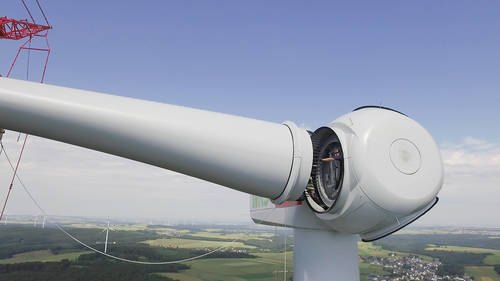This Global Wind Gearbox Supply Chain Update 2019 marks GWEC Market Intelligence’s first component assessment, which is part of GWEC Market Intelligence service that provides a series of insights and data-based analysis on the development of the wind industry.
Gearboxes are a critical component in a wind turbine that helps convert rotational energy into electrical power. Following the growth of global wind industry, the gearbox supply chain has been established first in Europe, then in the US and Asia. The global wind gearbox supply chain will continue to grow as energy demand increases and more wind turbines are installed in new markets to decarbonise our energy system.
GWEC Market Intelligence estimates that annual global wind gearbox demand is likely to reach 56.4 GW in 2019 and then peak in 2020 at 59.1GW. This growth will follow the wider wind energy market trends and be primarily be driven by the installation rush in US and China. Currently, around 75 GW of gearbox manufacturing capacity is available globally, thus GWEC Market Intelligence does not expect any major bottlenecks in the global gearbox supply chain in the next five years, sustaining the market demand for wind energy across the world.
In 2018, the conventional geared-drive turbine accounts for 73% of the global market share and GWEC Market Intelligence finds that it is unlikely that the direct-drive concept will replace conventional geared-drive as the mainstream drivetrain solution in the near or medium term. However, the market outlook for the direct-drive gearbox in the offshore sector looks promising, with global market share in this sector expected to reach 63% in 2023.
Meanwhile, the medium speed drivetrain has increasing gained the popularity. Its global market share passed 1% in 2015 and reached 3.7% in 2018. GWEC Market Intelligence believes that this growth trend is likely to continue and 10% of global gearbox demand in new installations in 2023 is likely to be medium-speed gearboxes.
Also similar to trends seen in the wind turbine OEM markets, the gearbox market has seen significant consolidation over the past decade. In 2010, nearly 50 wind gearbox suppliers were identified globally, but as of today, less than 20 gearbox suppliers are active in the supply chain. This is mainly due to the contraction of the global wind market in 2011-2013 as well as the impact of markets consolidation of turbine OEMs. The big 3 gearbox suppliers, NGC, ZF and Winergy, already made up three fourth of global gearbox production capacity, competition pressure for tier 2 and 3 gearbox suppliers therefore remains significant and GWEC Market Intelligence foresees further consolidation in the near future.
The US-China trade war has had a negative impact on these leading gearbox producers, especially NGC as its production facilities are located in China and is a major exporter to the US. Its two European rivals, Winergy and ZF, have been able to leverage their global footprint to reduce the damage imposed by the US tariff. The potential to further increase tariffs on Chinese exports of up to 50% has forced NGC to review its global supply chain strategy, which was a key driver for NGC to start building a gearbox production facility this year in India.
GWEC has already highlighted the harmful impact of these protectionist policies on wind power development, as tariffs on key components and materials needed to build wind turbines harms the investment potential for wind energy at a time when we need to be accelerating investments to urgently meet our decarbonisation goals. An open investment environment will be key for companies across the wind energy supply chain to thrive and carry out the energy transition cost-effectively to keep global warming under 1.5C.
Another key aspect to drive the gearbox market and therefor the global wind market is spurring technological innovation. Technology developments such as increasing gearbox torque density by replacing conventional roller bearings with journal bearings, launching the modular platform and introducing digital service solution are recent innovations that are helping turbine OEMs and asset owner-operators to bring down the Levelised Cost of Electricity (LCOE), making wind energy one of the most cost-competitive energy sources globally.


